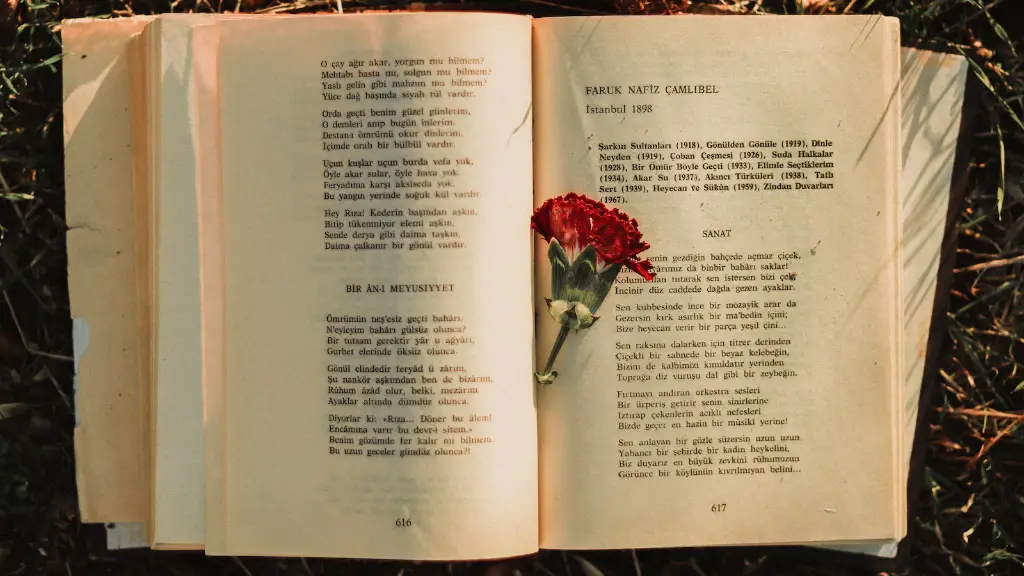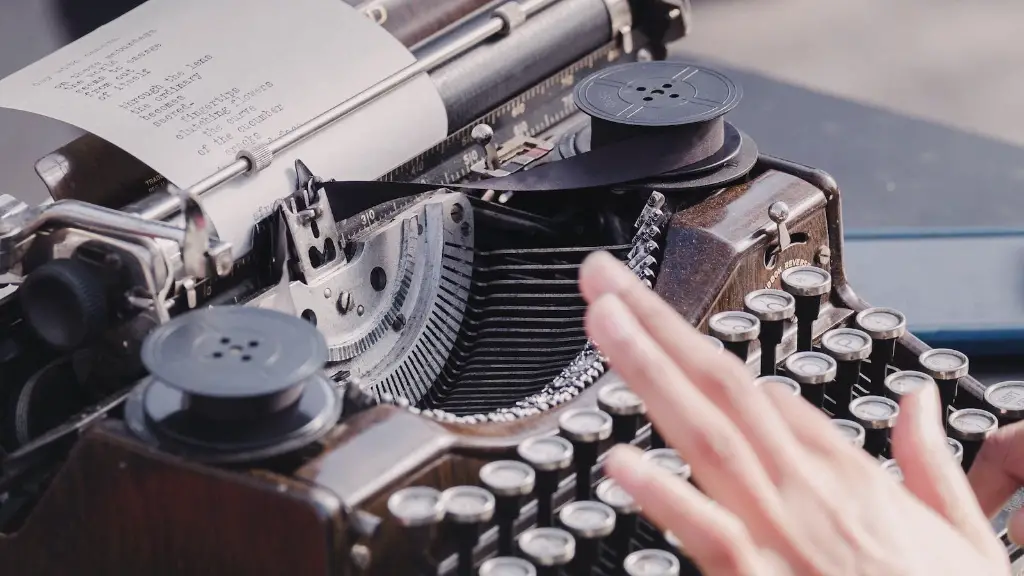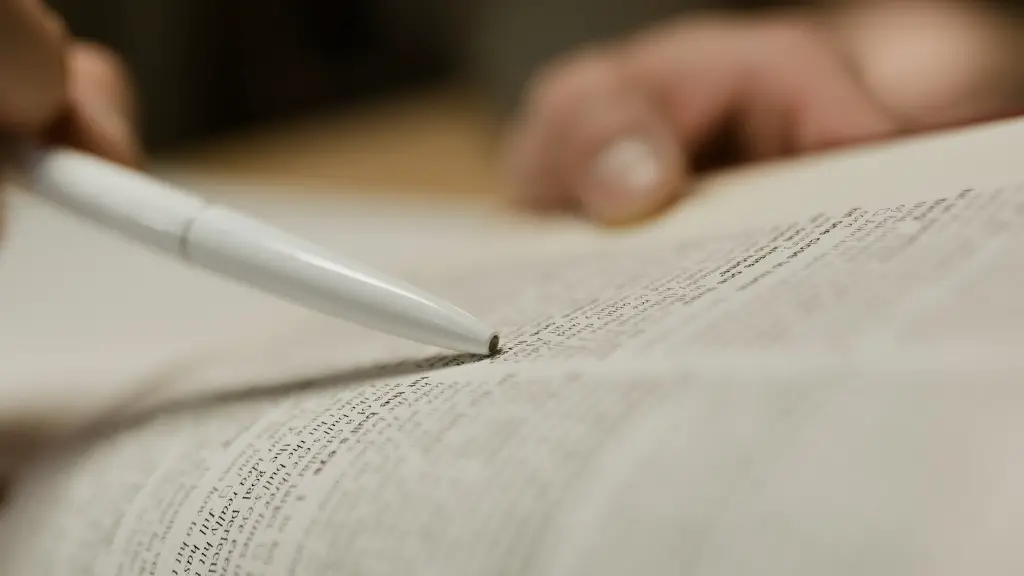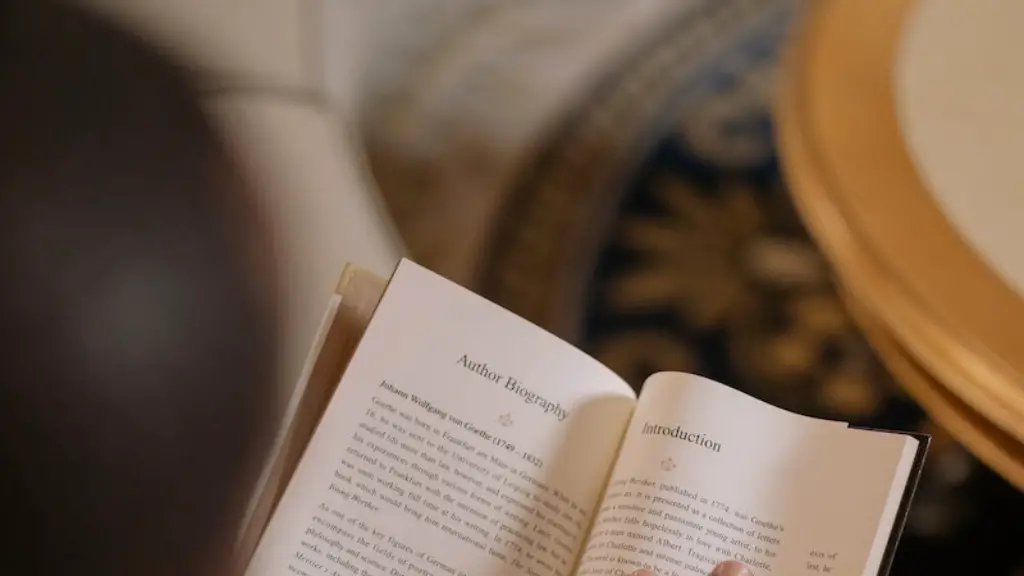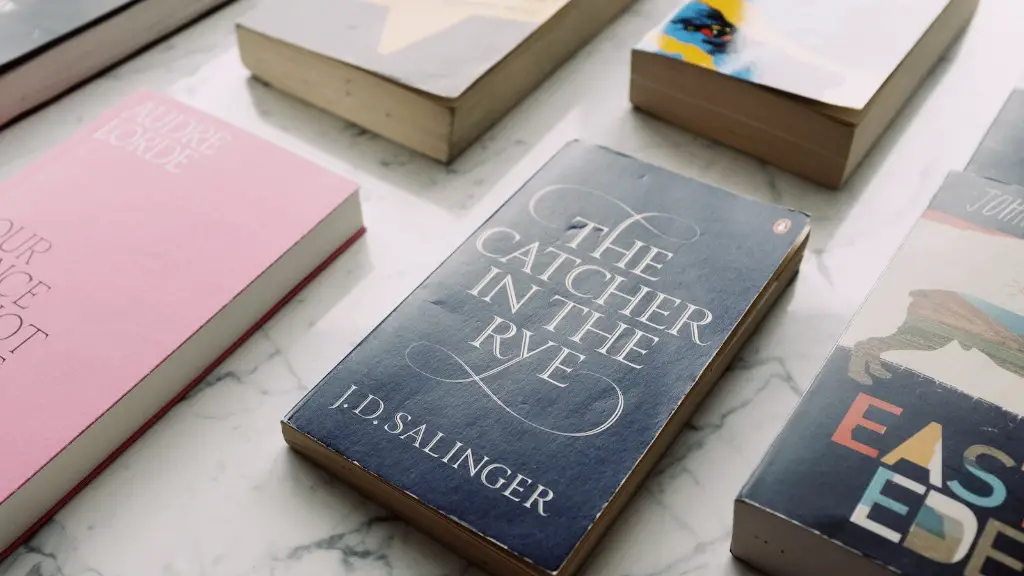Symbolism in poetry is a device used by poets to convey ideas and adds an emotional layer to the work. A poet uses symbols to represent concepts, objects and feelings. To fully understand the poem, these symbols must first be identified and interpreted. Poets use symbols to take their writing from the literal to the metaphorical, and to evoke an emotional response from the reader.
Symbols often have layers of meaning, going beyond the literal, and evoke different emotions and interpretations in different people. For example, a vintage car in a poem might represent memories and lingering nostalgia to one reader, while to another it might represent a source of frustration in terms of unreliability and mechanical problems.
Symbols in a poem can be literal or abstract, referring to nature or life experience. Nature is commonly used as a symbol in poetry, with water often representing the subconscious or emotion, and fire representing passion and sexuality. While philosophers have long viewed nature as a symbol for divine power, more contemporary poets may use symbols of urban life, such as cars, buildings, and technology, to represent a modern view of life and humanity.
Symbols can also set a tone for the poem, reinforcing the mood of the poem, whether melancholy or joyous. Many symbols are saturated in emotion, such as a simple sunset, which can be a romantic scene but also evoke a feeling of loneliness when used in a more reflective poem. A poet may play on the contrast of symbols to tell a distinct story, such as a dirty street juxtaposed with a majestic sunset. These contrasting images surprise the reader, and cause them to pause and reflect.
At the core, symbols represent something more than what they seem on the surface, and can allow the reader to penetrate into the soul of the poem. A poet might use a specific type of flower as a symbol in their poem, such as a daisy to represent youth and innocence, or flowers of sorrow to represent grief and mourning. Symbols in poetry occur in many ways and can represent human emotions, experiences and values deeply.
Symbols can often be used to create a more vivid and complete picture of the poet’s journey, thoughts and observations. In many great poems, symbols represent ideas, allowing the reader to delve into the poet’s innermost thoughts. This form of symbolism may be difficult to interpret, as it relies on the reader’s own knowledge and experience to understand the true meaning. Symbolism in poetry can add a new layer to a poem, and if examined properly can provide insight into the poet’s worldview or innermost thoughts.
Symbolism and Imagery
Symbolism is often used in conjunction with imagery in poetry. Imagery is the description of a scene, character or feeling through language. It uses the reader’s senses to delve into the poem. Symbolism can be used to strengthen a particular image, such as a rising sun symbolizing hope and new beginnings. The use of combined imagery and symbolism in poetry can be more effective at conveying a scene or feeling than just words alone.
A single symbol may be used in a multitude of ways to create vivid imagery in a poem. For example, a poppy flower might be used in one poem to portray pain, suffering and war, and in another it can be used to symbolize serenity, peace and beauty. Imagery and symbolism in a poem can construct different meanings and evoke different emotions in the reader depending on the context.
Symbols can also represent a continuous theme throughout the poem, such as a flower representing fragility, or a river representing a journey. In this way, the symbol is expanded upon and the meaning gains further clarity in the reader’s mind. The symbol can become a reminder of the theme throughout the poem and may even be used to link different sections of the poem together.
Use of Metaphors and Similes
Symbols may also be used through the use of metaphors and similes in a poem. A metaphor is an idea or concept expressed in a way that gives it a different meaning. For example, a poem may refer to a ‘fiery sunset’ in order to convey passion and intensity. This metaphor can also be used to symbolize feelings such as anger, love and sadness. Alternatively, a simile is the comparison of two things to draw attention to their similarities. A poet may compare a passionate love to a raging fire in order to evoke powerful emotions.
Metaphors and similes are commonly used together with symbolism in poetry, with one leading to the other. Often, a single symbol can have multiple meanings or interpretations and a poet can use metaphor or simile to lead their reader to the intended interpretation. Metaphors and similes are used as a tool to help explain an image or situation, and if used in combination with symbolism can help to create a more vivid and powerful scene.
Symbols as a Reflection on Society
Poets may also use symbols to make a statement about the state of society. In this way, symbols in poetry can be used to represent more than just emotions and feelings, but also the beliefs and struggles of a people. For example, symbols such as factories and computers may symbolize the industrialization of society, or the oppression of certain classes. Poets may use symbolism to make a political statement about the world, or to reflect on society as a whole.
Symbols in poetry can also be used to debunk a belief, or to challenge an existing way of thinking. For example, a poet might use a symbol to convey the idea that love is not just a feeling, but also an action. This can be done by using imagery such as a pile of stones, symbolizing the work involved in building a strong relationship. In this way, symbols can be used to convey a challenging and active message, as well as evoke emotion.
Symbols as a Reflection of Oneself
Symbols in poetry can also be used to express the poet’s inner thoughts and feelings. A poet may use symbols as a form of self-expression, to convey the innermost feelings of happiness, sadness or insight. For example, a poem may use the symbol of a butterfly to represent fearlessness and the courage to take risks. In this way, symbols in poetry can be used to tell a story about the poet’s journey, thoughts and emotions.
The use of symbolism in poetry can give the poem a deeper layer of meaning and emotion. Symbols can evoke strong emotions in readers, and provide insight into the poet’s thoughts and beliefs. Symbols can also be used to set a tone for the poem, or to add an extra layer to the imagery and metaphor. Ultimately, symbols provide a way for poets to take their writing from the literal to the metaphorical and to tell a story that resonates with readers.
Symbols as a Reflection of Nature
Nature is commonly used as a symbol in poetry, with symbols such as the sun, moon and stars often representing big ideas. A poet may use a symbol of a wave crashing against the rocks to represent life’s struggles and hardships. Alternatively, a symbol of a tree may be used to represent strength, growth and resilience. Nature is often used as a symbol in poetry to depict the power and beauty of the natural world, and to allow readers to delve into their own emotions.
In some cultures, certain symbols are used to represent ideas, with certain animals and flowers being used to convey certain emotions. For example, the symbol of an owl may be used to depict wisdom and knowledge where in another culture it may represent death. A poet may draw on the power of these symbols to evoke certain images and emotions in their readers. Symbols can create a strong connection between a poet and their readers, as symbols can reach back to the basic emotions and struggles of life.
Symbols as a Reflection of Literature
Symbols in poetry can often be a reflection of literature from other channels. A poet may take a symbol from another piece of literature and use it in their own poem, such as the symbol of a burning fire from one of the Greek classics. This type of symbolism is a way for poets to draw on the rich history of literature, and create new meanings and interpretations of their work.
Symbols can also be taken from spiritual writings, such as the symbol of a cross to represent faith and hope. Poets often look to other works of literature to draw on the power of symbols, or to explore the deeper psychological meanings behind symbols. In this way, symbols in poetry can offer an exploration of the collective unconscious, and evoke powerful emotions and memories in the reader.
Symbols in Pop Culture
Symbols can also be taken from popular culture, such as a symbol of a character or logo from a movie or TV series. Symbols are often used in popular culture to depict characters or objects in an iconic way, and these symbols often evoke strong emotions in viewers. Poets can use these symbols in their work to make a statement about current culture and its impact on society. For example, a symbol from a popular TV show may be used to make a comment on the shallowness of the show, or to highlight a particular aspect of it.
Symbols from popular culture can also be used to make a statement about the current state of society. A poet may use symbols from a movie that focuses on important issues such as racism and inequality, to highlight these in their poem. In this way, symbols in poetry can be used to both evoke emotion and to make a statement about society.
Symbolism in poetry is a powerful device used by poets to convey deeper meanings and evoke intense emotions in readers. Symbols have multiple levels of meaning, and can represent ideas, emotions and values. Symbols in poetry can also be used to make a statement about society and its values, or to reflect on the inner thoughts and feelings of the poet. Symbols can take on many forms, from nature to literature, and can be used in combination with imagery and metaphor to create vivid and powerful images.
